BTO/SWLA Flightlines – Bardsey Island/Ynys Enlli
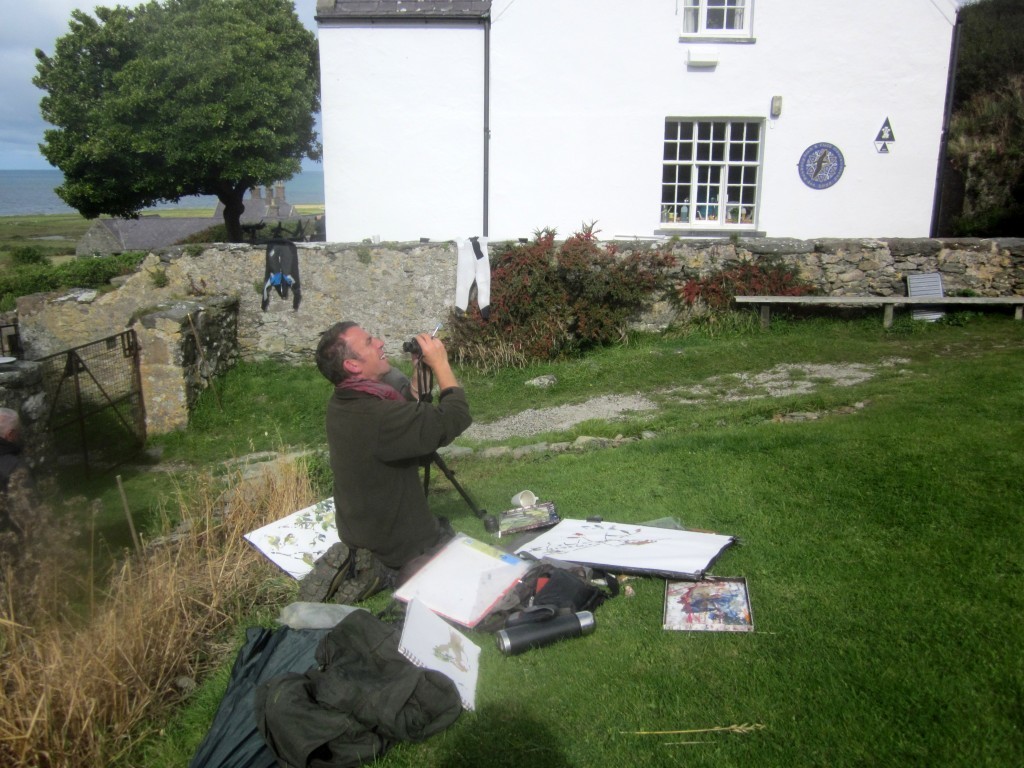
Kim Atkinson’s report
This September Darren Woodhead, Greg Poole and I spent a week on Bardsey to watch and draw the work of a Bird Observatory, as part of the ongoing BTO Flightlines Project with the SWLA.
Bardsey is a special island – below its turf lie the bones of 20,000 pilgrims to its medieval monastery; its dark summer nights echo with cries of 20,000 breeding Manx Shearwaters. Most of these, by September, have flown South. But the island’s position off the West coast of Llyn means any migrant could turn up at any time. It is an exciting few hundred acres.
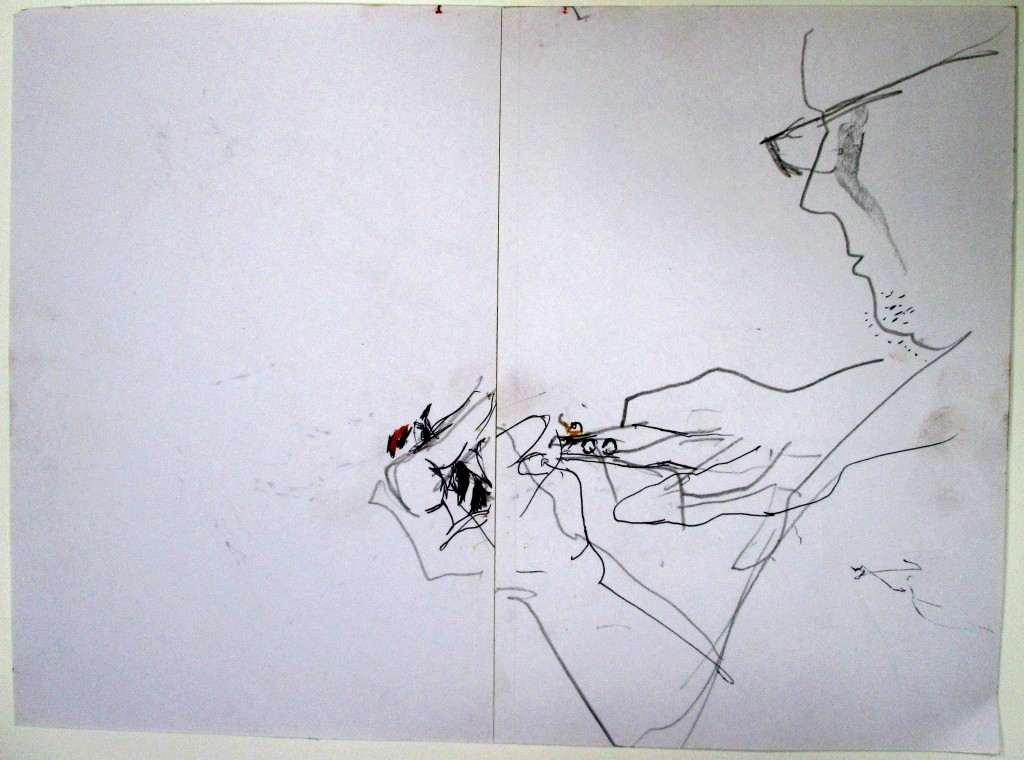
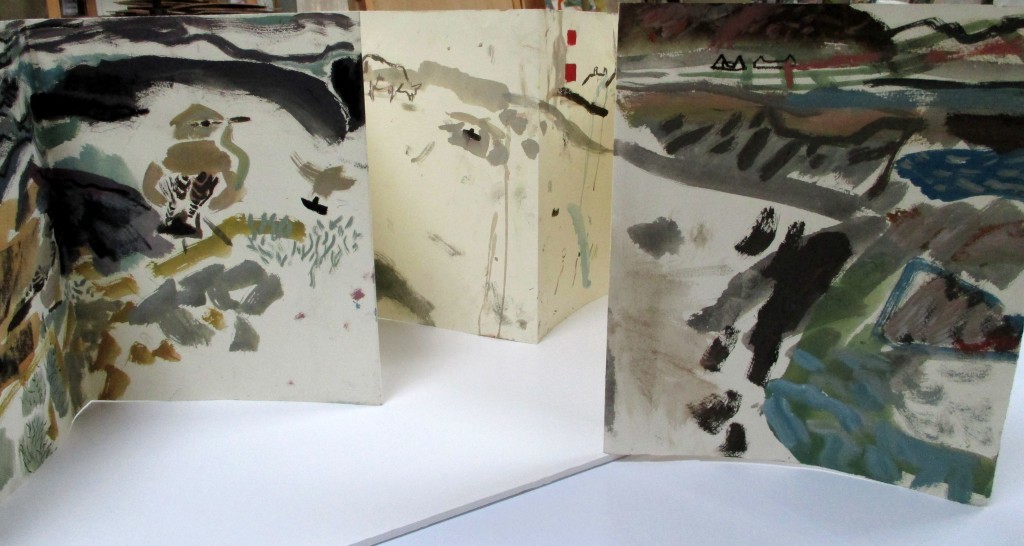
All three of us have visited and lived and worked on Bardsey before. It is a small island off the tip of the Llyn peninsula, a mile long and half a mile across, with a 500ft. heathery and gorsey ‘mountain’ with steep grass slopes on the East side and fringed with cliffs and cliff-nesting seabirds. The western flat land is divided mainly into fields, by low earth and stone banks; sheep and cattle graze the fields and mountain.
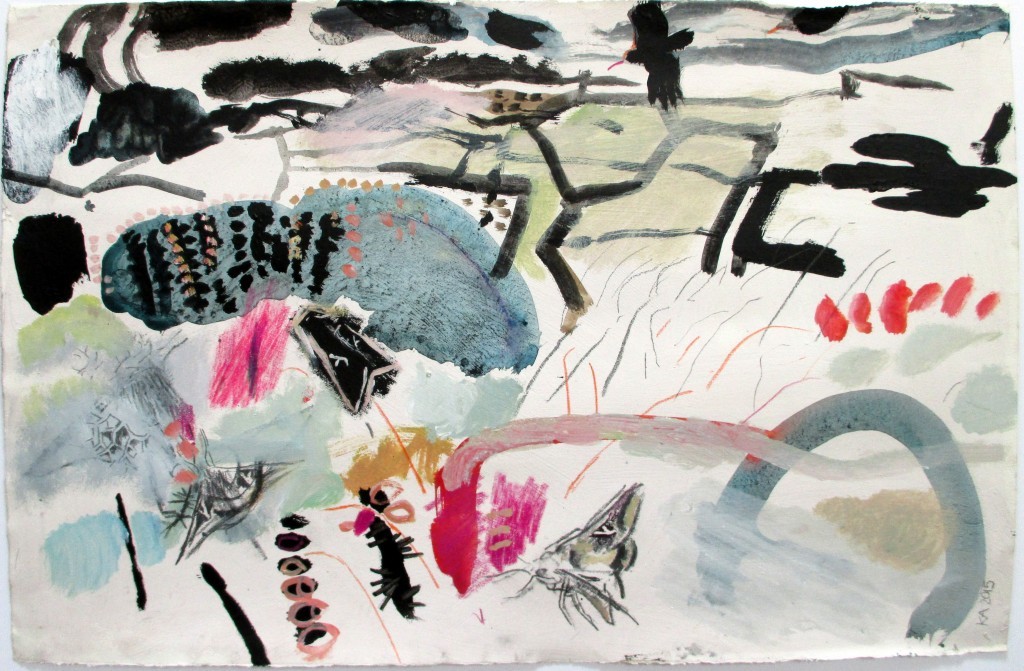
Greg, Darren and I shared the Observatory with a full complement of visitors in the second week of September. Telescopes were an almost permanent fixture out the front, facing the western coast and a good sweep of sea. As soon as we had hauled our bags up the steep little grassy slope, cups of tea in hand and telescopes to the sea, we were given our introductory talk by Steve and Emma Stansfield, the Wardens. Risso’s Dolpins off theWest coast distracted us .
The weather over the week, a mixture of strong Westerlies, quiet spells, rain and sun, was not that which brings many migrants. Numbers of Goldcrest, Chiffchaff, Robins, Blackcap were in the tens not, as later that month, the hundreds. Probably dissapointing for birdwatchers but it meant there was plenty of time to draw the ringing proceedure and ask questions.
Extracts from the diary:
Fresh Westerly wind over night and several mm. of rain. Later a clearance and westerly, still fresh, but Steve opened some of the Cristin nets at 8 a.m.
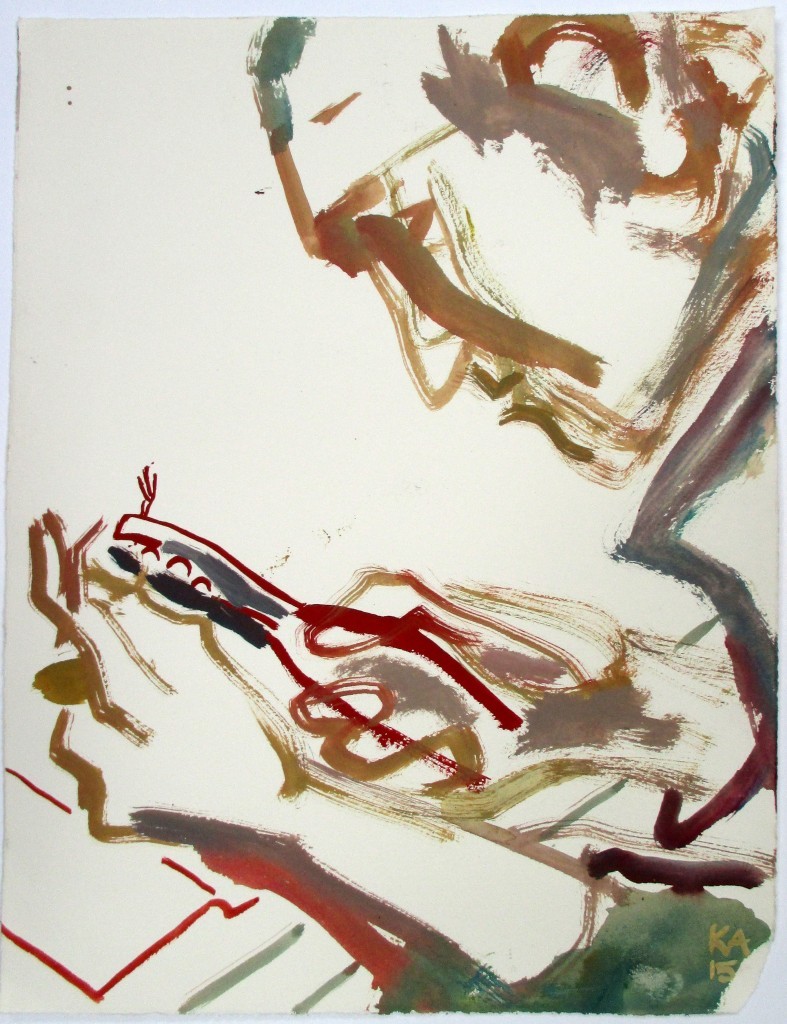
First into the nets was a Goldcrest. Half an hour later, a Robin. We followed the whole process of extracting, carrying to the ringing room, ringing, measuring wings, weighing (headfirst into a film canister on scales), blowing the body feathers apart to assess fat, ageing by the coverts and tips to tail feathers.
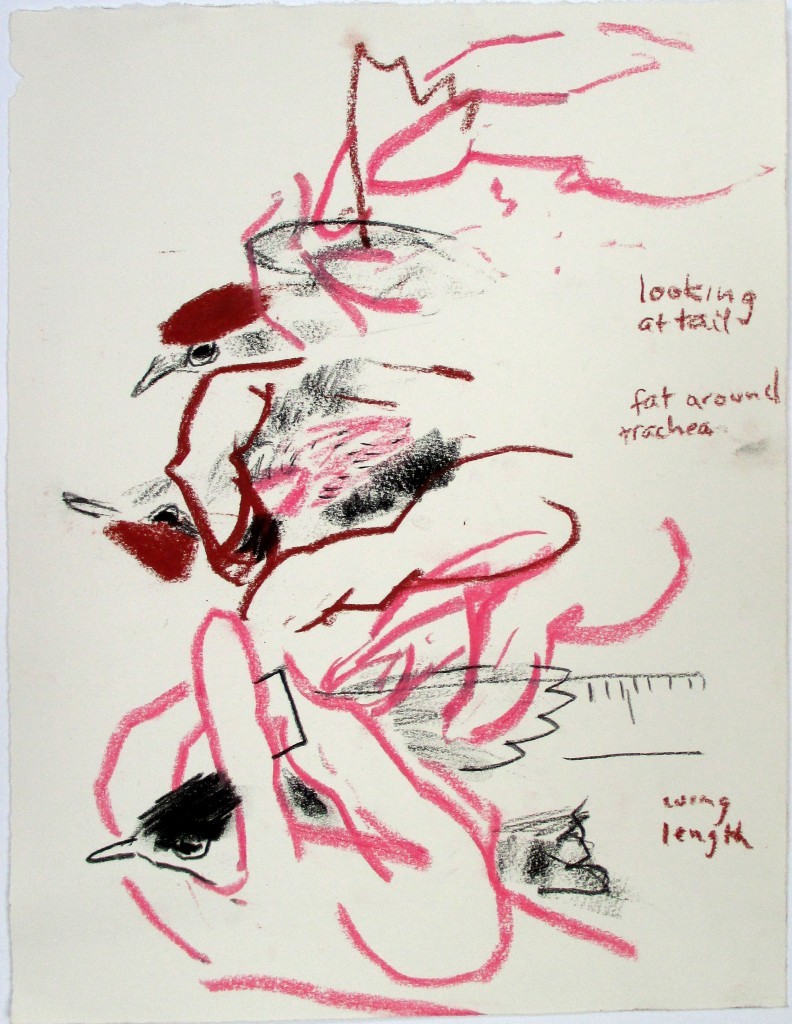
Two or three Goldcrests caught this morning were re-traps from a couple of days ago and had lost weight. One was caught in the middle of the day, a re-trap from first thing, and in the intervening four hours had gained 0.5 grammes.
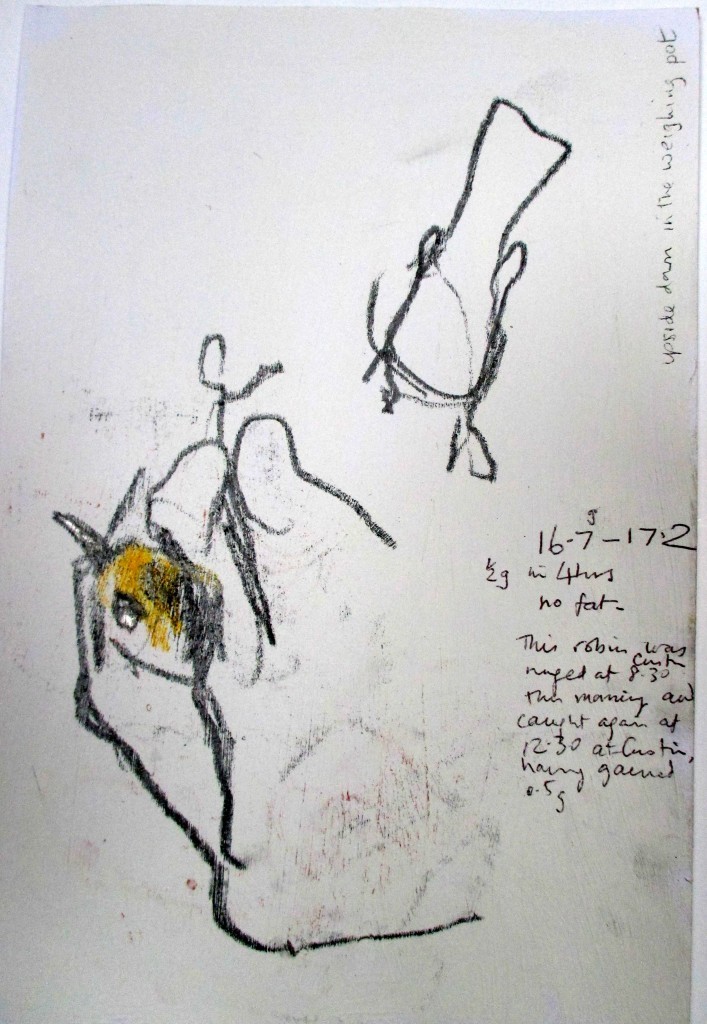
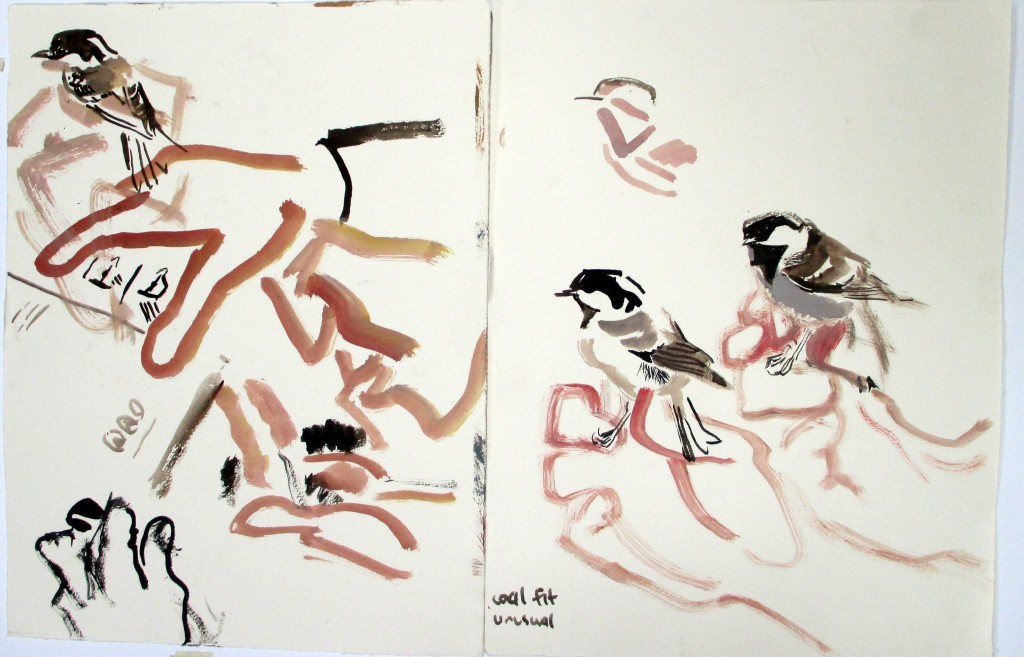
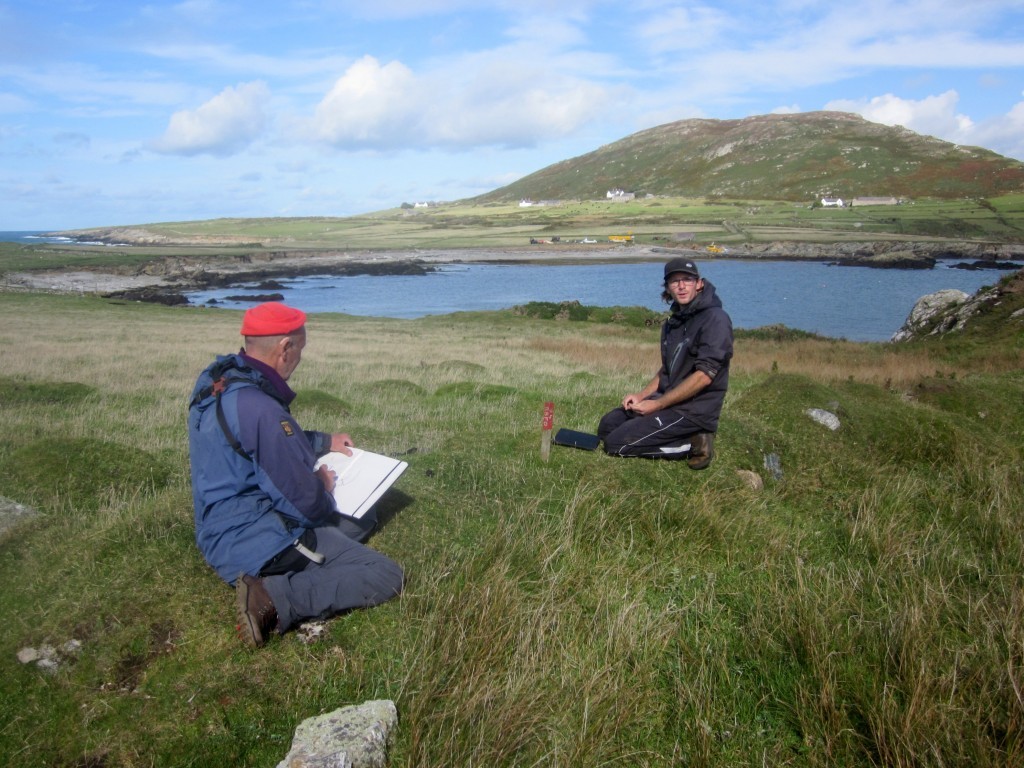
Later, on the South End – Darren, Greg, Emma and I are drawing – even the fruitless groping in Rabbit holes is interesting to draw. Then Mark pulled a bird out, feathered except for a grey downy tummy. The new feathers on its head and mantle are frosted charcoal, and some dark barring creeps round onto the side of the neck. The young birds’ primary tips are pointed with an added little hook on the point. This and the overall fresh blackness of the plumage distinguishes them at distance from adults. The parents have left them in their burrows for several more weeks to use the fat stored around the belly and grow adult plumage before they too emerge and head South.
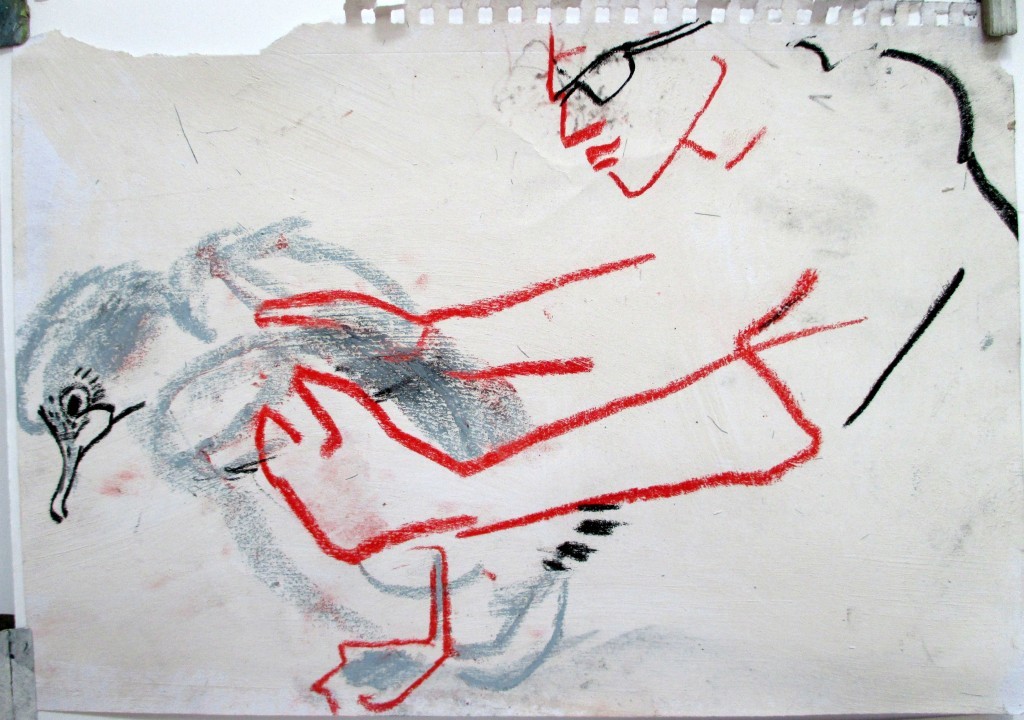
The generator goes on at around 7 pm and Log is at 8.30. The two Assistant wardens take their turns, Steffan last evening and Mark this time. Circle of us in the common room in Cristin Uchaf, some with notebook ready (Rosie) others doing the crossword or reading the Seaweed book, or even eating (us three). Birds are called, there is a response:
“ Divers…?”
Silence. Mark mumbles on down the Systematic List.
“….any counts for MeadowPipit”?
“ three on the narrows, one or two in the wetlands”
“four on Pen Cristin”
“Corvids?”
“two Jackdaws”
I ask “do they not breed here now?” (they used to, even in the rabbit holes on Pen Cristin)
Steve-“no, they don’t, haven’t for some years now”
Me- “its odd, they’ve increased no-end on the mainland”
Steff-“they’re all over the place in Porth Meudwy”
“Ravens?”
“Twenty-one over the obs this morning” — a good sized flock, out of the usual
“Anglesey birds maybe”(there is a very big roost there in winter)
And so on. We annotate the Log, and it’s interesting.
Finally,
“Butterflies”!
Steve- “Comma, here in the garden, a rare butterfly here. The last one was about eight years ago.”
“Any seal counts?”
Rosie consults her notebook again – there are new pups here and there, and mobs of eighty or so hauled out in the Henllwyn and more round the coast.

Wednesday 23 September
Dawn sounds—I’m just behind the old School, above the Bullaces of Cristin garden, below the water storage tanks, near Steve’s (Porter, farm manager) beehives.
Working on long strips of concertina–folded paper and drawing bird sounds in sequence ; above, the sky freckled soft grey altocumulus below salmon cirrus, and the sky lightening starling-egg blue. A broad band of brass over the western horizon. A scaly, colourful, pastel morning.
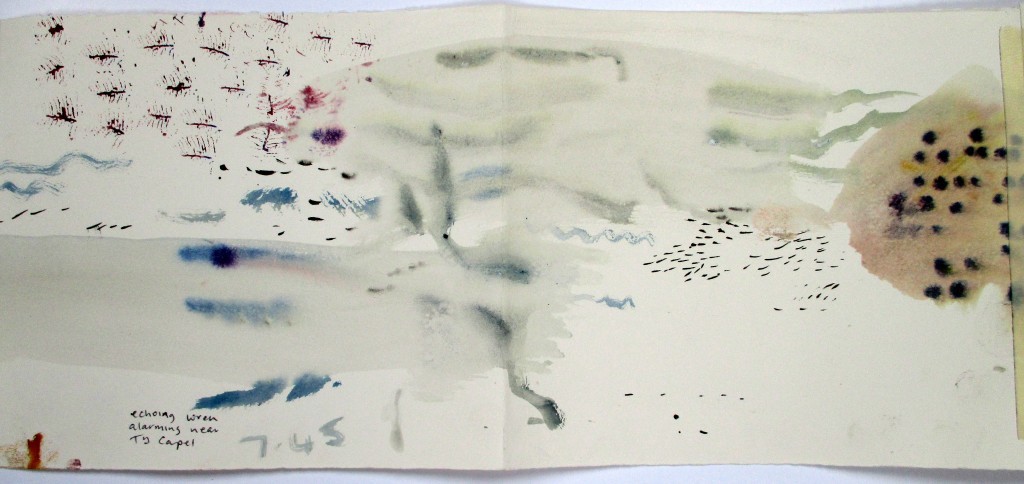
The sound of Robins singing, Dunnock piping, a Stonechat clacking stones above Cristin in the tall gorse. At first, much alarming of Robin, Wren, Dunnock. Later, a Chaffinch or two drop in, triangular chips of calls. Watery rich CRLLUK from a hidden Moorhen by back gate.
The sounds become cooler, wider-spaced; corvids join—a Chough pair fly to and fro along the mountain. Although it’s now only eight o’clock it feels as if the air is shared more widely.
The intrusive taped Coal Tit/Willow Warbler medley starts up by the net-ride.
I have reached the end of the second side of paper, of my concertina.
The lads have opened the nets, and we’re trailing them.
Friday 25th September

Late-morning: Steve (Porter) appears over the mountain suspended from a lime green paraglider. In a short while Steve becomes surrounded by eleven Buzzards. Mothy big pale birds, which Darren can see are juveniles with streaked upper breasts. Against the blue they drift west. Four more circle with Steve before they too head west.
There is some excitement as this is not a regular bird on the island despite there being a strong breeding population just over on the mainland, nesting on the cliffs as well as in trees.
Down to Solfach for a snorkel.
After hauling out and peeling off, settled down as the light became golden, to watch Linnets line up along the turf at the back of the beach, and Pied Wagtails leap and pirouette after flies on the beach. Painting simultaneously the start of the memory of underwater landscape, and the actual activity of birds, constant flux of groups and individuals, and the rocks radiating warmth, dead weed yielding ample insect food, small stream for bathing. This end of Solfach is always a feast of activity.

Suddenly an inchoate bellow from the far side of the beach— Darren and one of our fellow Obs guests are there, they have spotted something- Oh gosh what, where? Then I see it, a minute gull-like bird swimming this way and that and pecking the surface, on the very edge of the greasy-calm incoming tide, just off the beach, which I’d been too busy painting to see, right in front of my nose.
It’s a Grey Phalarope.
You can see some of Greg’s field sketches on his website
and some of Darrens’ field paintings on his twitter feed from late September